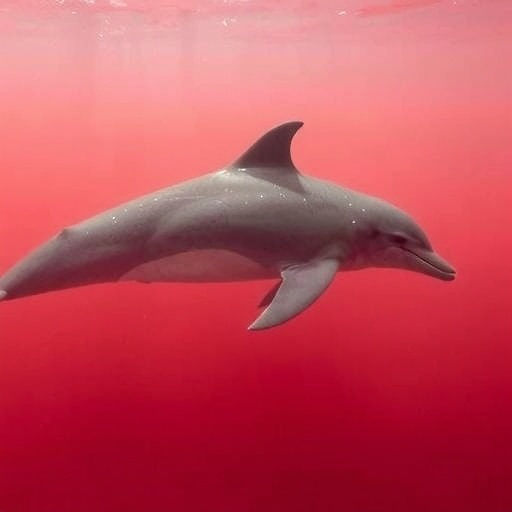In a striking new study published in the renowned journal PLOS One, researchers have documented the first-ever detection and comprehensive characterization of microplastic contamination in the endangered Indus River dolphin (Platanista minor). This extraordinary finding underscores an emerging environmental threat that not only affects this rare aquatic mammal but also reflects broader ecological challenges facing riverine ecosystems worldwide. The study meticulously details how microplastics—tiny plastic fragments less than five millimeters in size—have infiltrated the gastrointestinal tracts of all five stranded dolphin specimens examined, revealing a crucial and troubling intersection between pollution and wildlife conservation.
Microplastics, a global pollutant with origins in consumer products, industrial processes, and degraded larger plastics, have become ubiquitous across aquatic environments, from oceans to rivers. Their pernicious presence in the Indus River dolphin highlights the scale and complexity of contamination plaguing freshwater species long thought to be insulated from such anthropogenic pressures. Through the application of advanced analytical techniques, including stereomicroscopic examination and attenuated total reflectance Fourier-transform infrared (ATR-FTIR) spectroscopy, researchers identified an array of microplastic types—fibers, fragments, sheets, and beads—each contributing distinct morphological characteristics to the contamination profile.
The Indus River dolphin itself is an imposing sentinel species, endemic to the Indus River in Pakistan and straddling the brink of extinction due to habitat fragmentation, pollution, and entanglement risks. The discovery of microplastic ingestion adds a new dimension of hazard to the dolphins’ survival prospects. Scientific teams carefully dissected and analyzed the gastrointestinal contents of five stranded animals, revealing consistent microplastic burdens that underscore a pervasive contamination issue that is both alarming and unprecedented in this particular species. The morphological diversity observed suggests multiple sources and pathways of plastic waste intrusion into the riverine ecosystem.
Analyzing the spectral fingerprints obtained by ATR-FTIR, the study delineates the exact polymer compositions of the microplastic samples. Predominantly, synthetic fibers were identified, likely stemming from domestic wastewater and textile effluents entering the river system. The fragments and sheets, commonly derived from degraded packaging and industrial debris, further illustrate how anthropogenic activities across the Indus basin contribute multifaceted plastic pollution. Such detailed chemical profiling informs both the severity of pollution and potential intervention targets, representing a significant advance in environmental toxicology for freshwater megafauna.
Critically, the study moves beyond mere documentation to assess the ecological and conservation implications of microplastic contamination in this flagship species. While the direct toxicological effects of ingested microplastics remain a complex and evolving area of research, evidence suggests potential impacts including compromised nutrition, physical blockages, and chemical poisoning due to additives and adsorbed pollutants. Taken together, these factors may exacerbate the already precarious population dynamics of the Indus River dolphin, prompting urgent calls for integrated plastic waste management within the Indus River basin.
Furthermore, the research elucidates the methodological rigor underpinning microplastic detection in biological specimens, an evolving field often hindered by contamination and analytical inconsistencies. The authors employed stringent laboratory protocols and contamination controls, emphasizing reproducibility and reliability in identifying microplastics from biological matrices. This approach sets a benchmark for future toxicological studies involving aquatic organisms, particularly those that are endangered or have limited sample availability.
Another critical takeaway from the study is the revelation of microplastics as an emerging vector of pollution within South Asia’s largest river system, serving as a microcosm for global freshwater contamination challenges. The findings prompt broader ecological questions—are other endemic freshwater species similarly exposed? What is the cumulative impact of these pollutants on riverine biodiversity? These considerations carry profound implications for regional biodiversity conservation strategies and sustainable river management policies.
The interdisciplinary collaboration between researchers from China, Denmark, the United Kingdom, and Pakistan adds value by integrating diverse expertise encompassing polymer chemistry, marine biology, toxicology, and conservation science. This collaborative framework not only enriched the analytical depth but also underscores the global dimension of plastic pollution, transcending geographic and political boundaries. Through cross-border scientific alliances, the study advocates for regional cooperation in monitoring, regulation, and mitigation of freshwater plastic pollution.
While the study was generously supported by various Chinese national science foundations and academic projects, the researchers report no external conflicts of interest, reflecting independent and transparent scientific inquiry. This integrity enhances the credibility of their conclusions and bolsters international confidence in addressing environmental contaminants affecting vulnerable species. Their open-access publication in PLOS One ensures that these vital findings are accessible to researchers, policymakers, and the public, fostering informed dialogue and action.
From a conservation policy perspective, the identification of microplastic threats in the Indus River dolphin demands immediate integration into existing conservation frameworks. It calls for enhanced environmental monitoring, stricter waste management regulations, and public awareness campaigns focused on reducing plastic discharge into riverine habitats. Policymakers must leverage scientific insights to implement effective pollution controls, balancing development with ecosystem health to safeguard endangered species and their habitats.
Finally, the pioneering nature of this research serves as a clarion call across scientific and environmental communities. As anthropogenic pollutants pervade even the most remote and endangered freshwater species, there is an imperative to intensify efforts in pollution research, ecosystem monitoring, and species conservation. The findings highlight a troubling but necessary urgency to understand and mitigate the cascading impacts of microplastic contamination on freshwater biodiversity worldwide.
Subject of Research: Microplastic contamination in the endangered Indus River dolphin and its ecological and conservation implications.
Article Title: First characterization and risk assessment of microplastics in the endangered Indus River dolphin (Platanista minor): Implications for conservation strategies
News Publication Date: 24-Sep-2025
Web References: http://dx.doi.org/10.1371/journal.pone.0330253
Image Credits: Credit: Ahsaan Ali, CC-BY 4.0
Keywords: microplastics, Indus River dolphin, Platanista minor, freshwater pollution, polymer spectroscopy, ATR-FTIR, riverine biodiversity, conservation biology, environmental toxicology, plastic contamination




